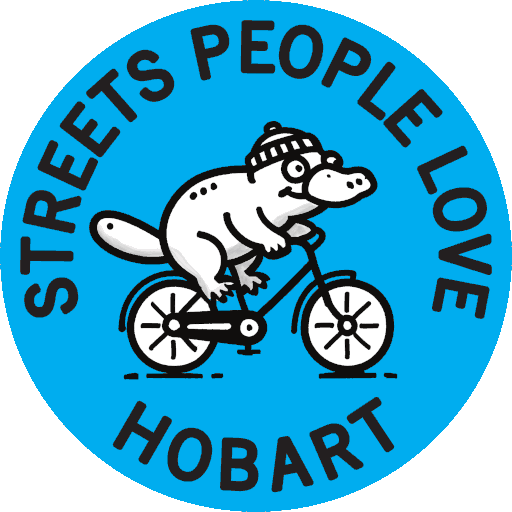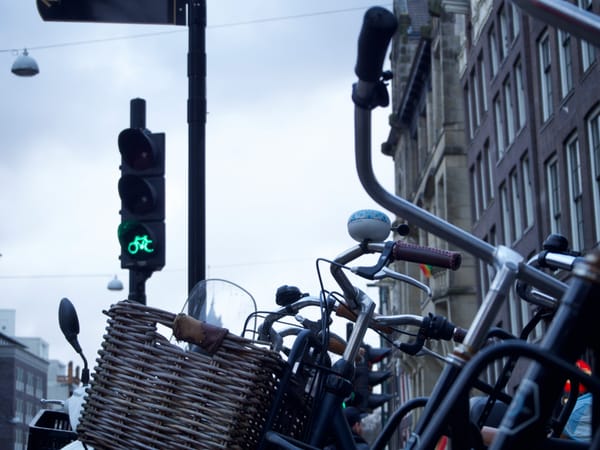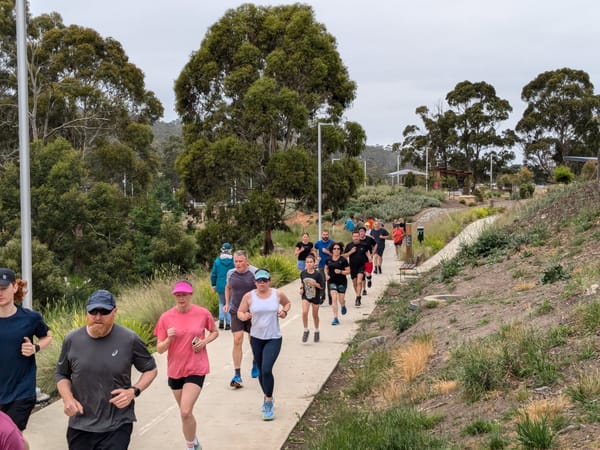Commonwealth Government Economic Reform Roundtable

As Australia charts a course through economic uncertainty, Streets People Love Hobart has contributed a community perspective to the Commonwealth Government’s 2025 Economic Reform Roundtable. This initiative, focused on boosting productivity, building resilience, and strengthening the national budget, is a rare opportunity to advocate for smarter, fairer investment in the places we live, move, and connect.
In our submission, we make the case that thoughtful urban design and investment in active transport aren’t just good planning, they’re sound economics. From the overlooked costs of congestion to the massive return on investment from walking, cycling, and public realm upgrades, we argue that transport equity and placemaking must be central to Australia’s productivity agenda.

Streets People Love Hobart
Submission to the Commonwealth Government Economic Reform Roundtable
25th July 2025
Prepared by SPLH members
Endorsed and submitted by Mark Donnellon
Contact perci@streetspeoplelovehobart.au
Thank you for the opportunity to contribute ideas for the Economic Reform Roundtable being held at Parliament House in August 2025.
Streets People Love Hobart is a community-led initiative organised by a passionate group of local advocates. Our mission is to engage people and advocate for streets that prioritise people, safety, and sustainability. We believe Hobart deserves vibrant, welcoming spaces where everyone can connect, move, and thrive. (We also believe that applies equally to all cities and towns across the nation!)
We understand the Economic Reform Roundtable (ERR) has been created to help generate solutions to counter Australia’s falling productivity, and focus on three priority areas: productivity, economic resilience and budget sustainability.
Our ideas are focused on transport and placemaking, which is in the national interest, and is fiscally responsible (likely to be budget positive) and practical.
Placemaking - Federal Government role
As the built environment undergoes rapid decarbonisation, there is an urgent need for a shift in policy to focus not just on the verification of end-building products, but also on the front-end design process and urban interventions. To ensure the success of retrofits and adaptations, a higher level of expertise from design professionals is essential.
As highlighted by the Australian Institute of Architects[1] and the Planning Institute of Australia, the following interventions are compelling in terms of driving the transformation to a Net Zero economy:
- Establishing a Federal Government Architect of Australia within the Department of Infrastructure, Transport, Regional Development, Communications and the Arts (DITRDCA) would provide the federal government with a powerful mechanism to coordinate policy, drive national scale innovation, and ensure that taxpayer dollars are invested in resilient, high-impact public infrastructure
- a national standard for adaptation decision making, with an overarching planning and decision-making framework to guide consistent and considered planning outcomes in response to community vulnerability. It should set out the process for determining where: preventing development, providing emergency relief, building back or planned retreat approaches are best suited
- Fit for purpose building standards. Building Ministers have recognised the need to make Australia’s buildings more resilient to extreme weather events driven by climate change
- Developing an infrastructure plan, linking infrastructure funding to national policy goals, and reinstating the National Urban Design Protocol
- Urban biodiversity should be integrated into housing developments, aligning with blue-green infrastructure to enhance environmental resilience and reduce urban heat.
- Appropriate levels of infrastructure investment prioritising residential apartment buildings and “missing middle” housing will result in more affordable housing outcomes
- Investment in sustainable and climate resilient communities will result in smaller operating carbon footprints of our cities.
Every $1 invested in architect returns $11.40 in capital appreciation.
Transport equity and efficiency
The costs of road congestion are the most significant component of transport costs impacting users and the economy of Australian cities. While quantitatively very small relative to the cost of road congestion, public transport crowding is a major and likely growing challenge for Australia’s largest cities. By 2031, the forecast total annual cost of road congestion is estimated to be $39 billion, with public transport crowding at $837 million[2].
We note the Federal funding allocation of $17.1b for road and rail construction over the coming decade (to 2035-26)[3]. However funding for the Active Transport Fund over the coming 4 years (to 2028-29 FY) is $100m, which equates to 1.2% of the roads budget (based on road funding over equivalent time period). International best practice is for at least 10% of road-related funding be allocated to active transport, with the UN recommending 20% allocation[4].
If a 10-20% allocation were implemented, it would equate to $1.7-$3.4b invested over the coming decade for active transport. Economic benefits of this investment (such as reduced health costs, reduced congestion, property value uplift) are estimated to be 5:1, suggesting an economic boost of $8.5-17.0b to the nation’s economy[5].
Similarly, redirecting the $250 million in revenue that the Commonwealth Government forgoes by allowing large, expensive utes to be exempt from the Luxury Car Tax[6], would not only triple Commonwealth spending on active transportation, but should easily cover the cost of a national e-bike subsidy program. Such a scheme could be targeted towards those on lower incomes who are the least able to buy a bicycle or e-bike.
We trust this is considered carefully by the Roundtable. We welcome being a part of any future consultation sessions that the Commonwealth organises regarding this process.
Yours sincerely,

Mark Donnellon
President
Streets People Love Hobart
[1] AIA - 2025 Australian Federal Election Priorities and PIA - Planning for a Better Future - Federal Election Priorities 2025
[2] Infrastructure Australia, Urban Transport Crowding and Congestion The Australian Infrastructure Audit 2019 Supplementary report, section 2.2, page 6 - https://www.infrastructureaustralia.gov.au/sites/default/files/2019-08/Urban%20Transport%20Crowding%20and%20Congestion%20%28Lower%20Resolution%29.pdf
[3] Commonwealth Government, 2025-26FY Budget, Budget Paper No. 1, Statement 1: Budget Overview, page 29 - https://budget.gov.au/content/bp1/download/bp1_bs-1.pdf
[4] The Australia Institute, Proactive investment: Policies to increase rates of active transportation (2024), page 2-3, 27 - https://australiainstitute.org.au/wp-content/uploads/2024/10/Policies-to-increase-rates-of-active-transportation.pdf
[5] Queensland Department of Transport and Main Roads (2023); Queensland Cycling Infrastructure Investment Strategy and Business Case 2016–2026 - https://www.tmr.qld.gov.au/travel-and-transport/ cycling/cycling-investment-in-queensland
[6] Thrower (2024) Luxury Car Tax and the ute loophole - https://australiainstitute.org.au/report/luxurycar-tax-and-the-ute-loophole/





